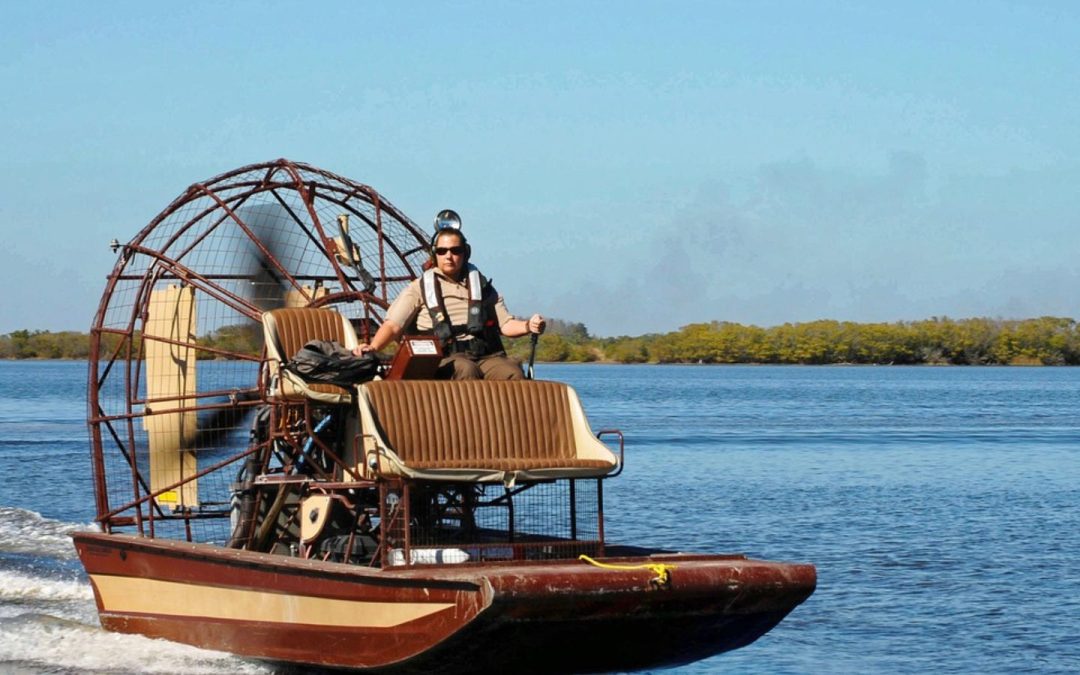Airboats work by using a large, rear-mounted aircraft-style propeller powered by an engine to push the flat-bottomed boat across shallow water, marshes, or swamps, where traditional propeller-driven boats would get stuck.
Airboats are one of the most unique and effective ways to explore shallow and hard-to-reach waterways. With their flat-bottom design and large fan-powered engines, they can glide over places where regular boats can’t go. But what makes them work so well? Let’s take a closer look at the technology behind airboats.
All About Airboats
An airboat is a type of boat with a flat bottom that moves through the water using a large fan placed above it. Instead of using an underwater motor, it moves by blowing air backward, which pushes the boat forward. This lets the boat travel over very shallow water, mud, or thick vegetation with ease.
How Airboats Work
Airboats are built for performance in shallow and marshy areas. Here’s what makes them work:
- Flat Bottom:Keeps the boat floating above water, even in just a few inches.
- Propeller (Fan):A large, airplane-style fan blows air backward to move the boat forward.
- Engine Power:Engines can be sourced from either aircraft or automobiles.
- Aircraft engines offer more torque and are ready for heavy use.
- Automotive engines are easier to service and use standard fuel.
Because nothing hangs below the water, airboats can cruise through terrain that would stop other boats.
Airboats vs. Traditional Boats
Traditional boats require deep water and are equipped with propellers submerged beneath the surface. Airboats, on the other hand, travel on top of the water. They are faster, quieter on certain surfaces, and much more versatile, making them ideal for touring, exploring, or surveying.
How Fast Can Airboats Go?
Airboats used for tours typically reach speeds of 35–40 MPH, offering a fun and safe ride. Racing airboats can achieve significantly higher speeds, but these speeds are generally not utilized for passenger tours. The goal is to provide a smooth, exciting experience that’s safe for everyone on board.
Can Airboats Go on Land?
Airboats can move briefly over dry ground, but they’re not meant for land travel. Rough surfaces can damage the boat’s bottom. For best performance and longevity, they should stay on water or smooth, soft ground.
Safe for All Ages
One of the great things about airboat tours is that they’re enjoyable for people of all ages. With skilled captains, comfortable seating, and safety gear such as life jackets and ear protection, these rides are ideal for families with children, adults, and even older passengers seeking adventure in a safe environment.
A Quick Look at Airboat History
Airboats were first developed in the early 1900s for use on water and ice. Over time, they became quicker, safer, and more dependable. Today, they are used for tours, rescue work, research, and more, demonstrating their versatility and utility.
Fun Facts About Airboats
- Airboats can float in only a few inches of water.
- Most don’t have brakes; captains stop them by slowing the fan and steering carefully.
- Used by rescue teams, researchers, and law enforcement.
- The first airboat was called “The Ugly Duckling.”
- Their design allows them to reach areas other boats can’t access.
Designed for Safety, Fun, and Exploration
Today’s airboats are designed to provide a blend of excitement, comfort, and safety. Whether you’re cruising over open water or weaving through narrow passages, they make for a one-of-a-kind experience that combines nature and adventure.
At Grape Hammock, we use modern airboats with advanced technology to ensure that guests of all ages enjoy a ride that is safe, smooth, and truly unforgettable.
Our Service Area: Lake Wales, Serbing, Frostproof, Dundee, Bartow, Babson Park, Haines City, Cypress Gardens, Lake Kissimmee, Avon Park, Highland Park, Davenport


